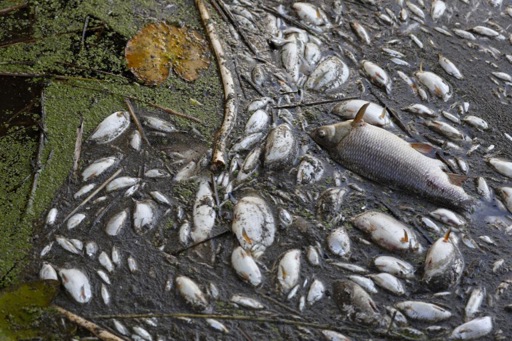The origin of the pollution of the Oder river, which flows at the Polish-German border, as well as the polluting substance, remains unknown, said the Polish Minister for the Climate on Sunday evening.
Dozens of tons of dead fish have continued to be fished out for several days along the river, in Poland and Germany. To date, “no analysis has confirmed the presence of toxic substances”, said Anna Moskwa, after a meeting with her German counterpart Steffi Lemke, in Szczecin, in northwestern Poland.
Germany is blaming Poland for not informing it of a potential chemical contamination in the Oder River, which runs through both countries, after tons of dead fish were found floating on the surface. pic.twitter.com/XEsCAM6thh
— DW News (@dwnews) August 14, 2022
Moskwa said that the analyses of the recovered fish did not confirm the presence of mercury or heavy metals. The only anomaly noted remains the high level of oxygen in the water. “We are analyzing different possibilities, both the introduction of dangerous substances… and the natural situation”, drought and heat waves.
Steffi Lemke, German Federal Minister of the Environment, said that it is now a question of “reducing the consequences of the disaster” and if possible, preventing further damage that it may cause. “We don’t know how long and to what extent this disaster will impact the ecological system: months, maybe years,” Lemke told reporters.
Related News
- Low Rhine levels risk leaving German waterways unnavigable
- Industrial water consumers do little to economise on consumption
- Belgium in Brief: Desalinating seawater?
The two ministers assured that the pollution of the Oder had no impact on groundwater or drinking water on either side of the river. Polish police on Saturday offered a reward of €210,000 to find the cause of the pollution.
The Polish nationalist-populist government has come under fire from both Poland and Germany for not reacting sooner. Polish Prime Minister Mateusz Morawiecki admitted on Saturday that he had been informed of the situation “on August 9 or 10”, while the first signs of pollution were recorded on July 26 around the Polish town of Olawa in the south west of the country.

